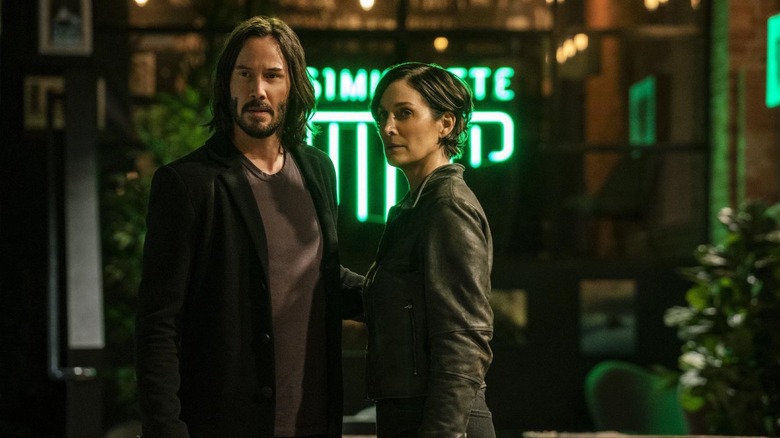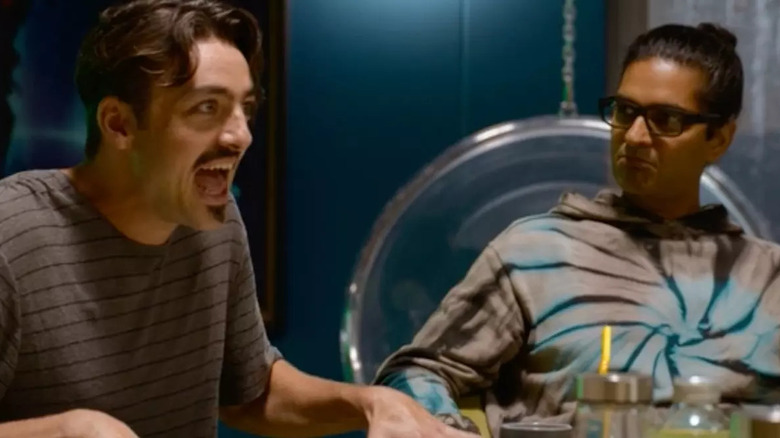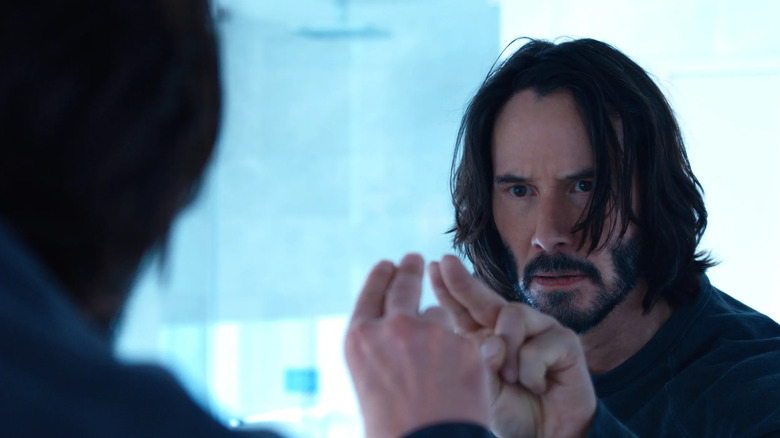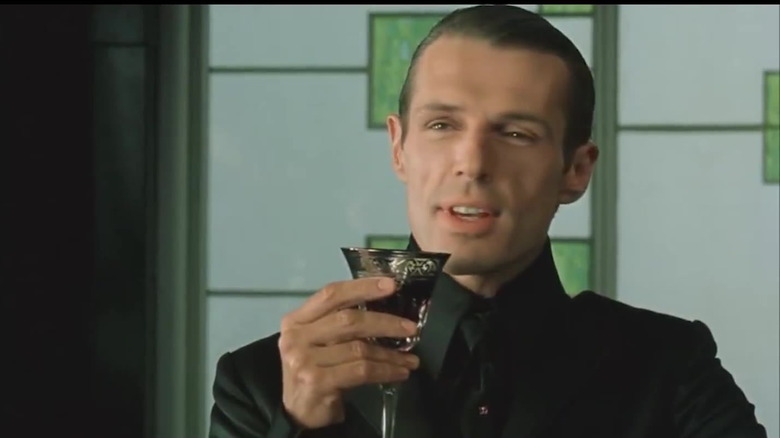The Matrix's Massive Influence Made It Tricky To Write Resurrections
For Lana Wachowski, the prospect of writing a fourth "Matrix" movie was daunting on a number of levels. For one, Lana and sister Lilly Wachowski left nearly everything on the table with "The Matrix Reloaded" and "The Matrix Revolutions," definitively ending the stories (and lives) of Neo (Keanu Reeves) and Trinity (Carrie-Anne Moss). Furthermore, the impact of the original 1999 film, in particular, needed to be reckoned with, as it has not just permeated the culture but noticeably influenced the last 20 years of cinema.
Thanks to other factors, such as the ever-expanding world of big tech, the rise of social media and streaming entertainment, and advances in cinematic visual effects, the task of writing a follow-up to the "Matrix" trilogy looked even more challenging. Fortunately, Wachowski and co-writers David Mitchell and Aleksandar Hemon were up to the task, ready to both tackle most of those weighty topics and dismiss a few others in clever and subversive ways.
No one can be told what The Matrix is, certainly not Lana Wachowski
One of the most brilliant and enduring aspects of the original "Matrix" trilogy is the way Lana and Lilly Wachowski layered the films with multiple levels of meaning, philosophy, and tone, allowing for critics and audiences to develop their own personal interpretations. That very aspect set the bar high for a sequel, prompting Lana and her co-writers to not just figure out what it was they wanted to say with "Resurrections," but understand what a "Matrix" film really is at its core.
Wachowski and co-writers David Mitchell and Aleksandar Hemon settle this conceptual debate by facing it head-on, staging an actual argument over the concept within the film itself. According to an interview in Collider with producer James McTeigue, the idea for the scenes featuring a group of writers attempting to define the "Matrix" came from Wachowski's personal experience of being bombarded by others' opinions on "The Matrix" for the past 20 years.
"Once we get into the brainstorming group," McTeigue explains, "where they're all going, 'No. 'The Matrix' is this,' 'The Matrix' is that' ... that was just us having a bit of fun with what everyone's opinion of 'The Matrix' is, whilst in the middle of what the filmmaker who invented 'The Matrix' actually thinks 'The Matrix' is."
The Matrix becomes canon within itself
Following that impulse to layer meta narratives on top of narratives (a choice made easier given "The Matrix" trilogy's thematic preoccupations with illusion and false realities), Wachowski, Mitchell, and Hemon decided to nestle the fictional world of the "The Matrix" franchise within the story of "Resurrections" itself. In "Resurrections," the first three "Matrix" movies appear as a series of three video games written and designed by Thomas Anderson (Keanu Reeves), who doesn't realize he's actually Neo, stuck in another Matrix.
Speaking to /Film, David Mitchell explained how that concept was one of the "foundational ideas" presented to him by Wachowski that got him excited about possibilities for another sequel. He was impressed that it made the movie not "just one more in a row," but rather "a kind of a fractal case that holds and encases the trilogy," allowing the writers to comment on the importance of "The Matrix" both within the narrative of "Resurrections" and more broadly in pop culture.
Wachowski let Resurrections carve its own path
Given that major Hollywood blockbusters were parodying and paying homage to "The Matrix" barely a year after its initial release, a fourth "Matrix" film couldn't simply revive the iconic visuals and set-pieces from the first three films. As Lana Wachowski explained to IGN, "I couldn't just do a kung-fu scene, because so many people had already done what we did ... it's like, I can't imitate myself, everyone else has been doing it."
Leaning into meta-commentary again became a way for Wachowski, Mitchell, and Hemon to ensure that "The Matrix Resurrections" was its own unique work. One stellar example from the film is the reintroduction of the Merovingian (Lambert Wilson), a program that used to be part of the old Matrix, who, when confronting Neo again, goes on a hilarious, self-reflexive rant about technology and creativity that serves a double purpose of easing viewers' own perilously high expectations for the film. "I wanted to make a little bit of a joke," Wachowski explained, "or a little bit of a humor out of the way the last 20 years of digital technology has changed us."
All of these choices help make "The Matrix Resurrections" more than just a legacy sequel. It's a thoughtful conclusion to the original trilogy which rises above mere slavish regurgitation and nostalgic pandering to look intelligently at how the films — and the culture they helped shape — have changed.



